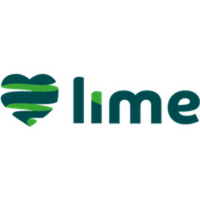Top ways employee benefits can help bridge the NHS gap
The NHS is struggling. Years of underfunding, combined with the impact of the Covid-19 pandemic (when thousands delayed seeking medical treatment) and waiting lists are sky high, with more than 7 million people on an NHS waiting list for hospital treatment – the highest since records began (NHS, 2022). Services like ambulances and A&E are also hugely stretched.
The impact of this is significant. Lime's research in November 2021 found that 56% of UK workers were worried about how long it might take to get a GP appointment and the same number were worried about how long it might take to get a diagnosis due to NHS waiting times.
One-third were suffering with a health concern that they had not sought medical help for due to concern over NHS waiting lists. As waiting lists grow, this will undoubtedly get worse.
The wider effect
The impact is not limited to those affected. Research by The University of Birmingham and The Times newspaper suggests that 53% of those on the NHS waiting list are of working age, meaning delays will almost certainly affect the economy.
The number of workers with long-term sickness, defined as being absent from work due to incapacity for more than four weeks, reached a record high of 2.5 million in July 2022.
With the acute pressure on the NHS building and the huge uncertainty this creates, it’s becoming increasingly hard for employers to manage staff absence, which in time will impact productivity and threaten profitability.
On a practical level, employers managing absences will need to consider what adjustments may be required for those employees, statutory sick pay, compliance with their sickness/absence policy and, lastly, whether an ill health dismissal should be considered.
Delayed treatment can delay return to work
Given the increasing backlog of people waiting for NHS treatment, employees may be unable to get the treatment they need in a timely fashion. With many surgeries being delayed and postponed, there is often no definitive date of when the employee should be able to return.
So, what can employers do to help their employees and mitigate the impact on their own business?
1. Examine your employee health and wellbeing benefit provision, talk to your suppliers about whether your benefits can help bridge gaps in NHS provision – such as offering employees access to GP appointments or mental health support (all areas where there is acute demand and limited NHS supply).
2. Make sure your employees know what support is available, how benefits work and where to go for help. Ask your suppliers to provide simple information you can publish across your internal comms channels and in the digital and physical places your employees interact.
3. Line managers can play a critical role here, so take time to ensure they are empowered to talk to their teams about what benefits are available and how to access them. Also, make sure line managers regularly talk to employees who are already absent from work to ensure they have access to all available employee benefits. They may be able to avoid a long waiting list which could get them the help they need quicker..
4. Many organisations have health and wellbeing benefits in place that are ringfenced to senior leaders, such as private medical insurance. Consider investing in new provision that bridges NHS gaps for the rest of your workforce. Focus on areas where the NHS is under the most acute pressure – cancer support, diagnostic tests and mental health support are a good place to start
5. Take time to consider the impact of any new benefits. Many lower-cost products work on a reimbursement basis (where the employee must pay up front for care and claim back the amount spent). Others, however, are digitally-enabled, with bills settled directly meaning an employee is never out of pocket.
Direct settlement takes away a key financial barrier to seeking private medical help, meaning that all employees (regardless of what they earn) can access healthcare, without delay.
Supplied by REBA Associate Member, Lime
Whole of workforce health services that make a real difference. Affordable, accessible, simple.







